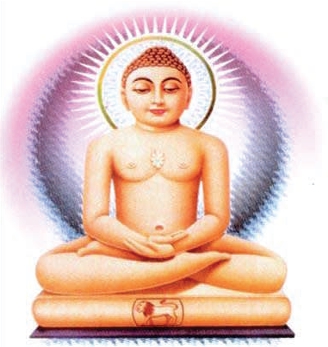
History and Doctrine of Bispanth
1. Doctrines
Doctrinal differences between the Terapanthi and Bispanthi mong the Digambaras are essentially of a minor nature. Both sects are image-worshipping. Bispanthis worship the Jinas and other deities such as Bhairava, showing Shaiva ascetic influence.
The main and important difference between them is the non-recognition by the Terapanthis of the bhattaraka system. This is an important Jain institution of a mainly religious person called a bhattaraka. The Bispanthis are the followers of the bhattarakas. From the Sanskrit, bhattaraka means a learned man, equivalent to an academic doctor. The bhattaraka is peculiar to the Digambaras and stands between the ascetic and the layman. He is a non-mendicant official who can combine the functions of caste-guru, teacher, and librarian. He also conducts rituals, supervises the taking of vows by lay persons, and oversees the affairs of the math, monastery. To the Bispanthis bhattarakas are their dharma-gurus, (religious teachers) and acharyas (religious leaders). Bhattarakas have always played an important part in maintaining and disseminating Jain doctrine. They also affected Jain doctrine. Shrutasagara wrote that a bhattaraka in the thirteenth century proclaimed that Digambara monks could wear clothes outside the math because of Muslim persecution.
The Bispanthis sit to worship and do not stand like the Terapanthis. Both Bispanthis and Terapanthis are so proud of their practices that they do not visit the temples of other Panths or sects.
2. History
It is probable that without the introduction of the bhattaraka system the Digambaras would not have survived. Nothing definite is known about the origin of the bhattarakas. What is known is that the bhattaraka institution developed in the medieval period only among the Digambaras. In the medieval period the Digambara community was facing disintegration and utter destruction because of uncertainty and insecurity. Muslim rulers disapproved of the practice of nudity and the Digambara ascetics were becoming lax. What was needed was someone in a responsible position between the ascetics and the laymen, and the bhattaraka evolved to fill this role. His duties were both religious and social and he looked after temporal and spiritual wants. He officiated at births, marriages, and deaths, and was a physician, astrologer, and adviser. On the religious side he took ceremonies and worship, consecrated temples and images, and delivered discourses to all. By his learning and example and with trained disciples, he unified the disintegrated Jain community and also spread Jain doctrine.
Bhattarakas probably started as the heads of groups of naked monks when maths, monasteries, were built beside temples from about the fifth century CE. This then developed during the medieval period to the bhattaraka becoming an important pontiff, at times like a king. The bhattaraka represented the local Digambara community when meeting with the Muslim authorities and Hindu rajahs. The bhattarakas had promoted Digambara integration, but with the pomp and power they then started to cause disintegration. The worldliness and wealth, lack of religious principles, neglect of religious and social duties, and restriction of their work to particular Jain castes rather than Jains in general caused revolt. In the latter part of the seventeenth century the Digambara Terapanth subsect was founded. It was thus on the bhattaraka issue that the Digambaras split into two equal sections, the Bispanthis who are followers of the bhattarakas and the Terapanthis who do not believe in the bhattarakas.
Then came continued decline and by the nineteenth century the majority of bhattaraka thrones had faded into insignificance. The oldest ones are still important and well known, at Mudbridri and Sravana Belgola in Karnataka and two at Kohlapur in Maharashtra. It has even been debated whether the institution should be retained and it has been suggested that they cease to be the heads of particular castes and become "organisers, propagators, and preceptors" of Digambara Jainism. This in fact seems to be happening for they do play an important part today in promoting Jainism by travelling in India and overseas and by working in education and publishing.
3. Symbols
The Bispanthis in their temples have Jina-images and the images of other deities such as Kshetrapala and Bhairava. Bhairava is an important deity to Shaiva sects such as the Gorakhnathis and was the main deity of the now extinct Kapalikas. The images are worshipped with flowers, fruits, and sweetmeats. Arati ritual, swinging fire over the image, is performed and prasad, holy food, is offered even at night.
4. Adherents
These are concentrated in the states of Maharashtra and Karnataka. In the 1981 Census there were 939,392 Jains in Maharashtra and 284,508 Jains in Karnataka. If about half of these are Bispanthis then there were about three-quarters of a million adherents. There are also small numbers of Bisapanthis in the north-western states of Rajasthan, especially in Marwar, and Gujarat. The number of ascetics is tiny, probably less than a hundred monks and nuns.
5. Main Centre
Sravana Belgola, Karnataka, and Kohlapur, Maharashtra.